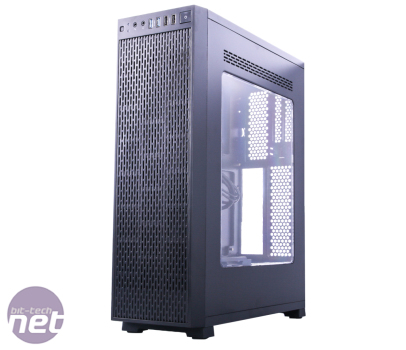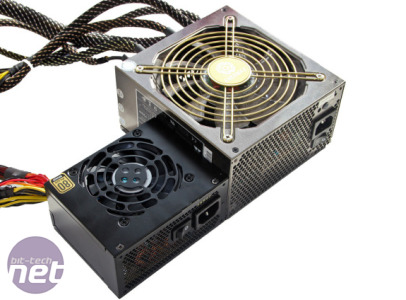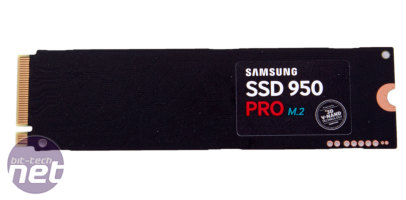I believe it's time for a PC case revolution
September 12, 2016 | 10:59

Two different areas of PC technology could have some big influence on the PC over the next few years. However, they might not be the areas you think. I'm not talking about graphics cards or CPUs but hardware that's often not that interesting - storage and power supplies.[break]
SFX PSUs are finally being factored into mainstream cases, but a lot of manufacturers are forgetting that you don't have to limit their use to small cases. Sure, they offer space saving benefits in small mini-ITX cases where arguably they're most valuable, but SFX PSUs can just as easily power a full size ATX system.
Admittedly, you might need some longer cables, but in general, there's no reason why SFX PSUs can't be used in larger cases. There's no rule that says you need to use a full size PSU; SFX PSUs come in decent power capacities now and most are fully modular too. However, despite Corsair, SilverStone and Thermaltake all now offering high-wattage SFX PSUs, there's surprisingly little innovation in cases beyond the mini-ITX form factor taking this into account.

Thankfully, Thermaltake has stepped up and made the first move, with the Core G3. It is, for the most part, an ATX case. It has no problem housing a full-size graphics card, an ATX motherboard and can even fit a 240mm all-in-one liquid cooler inside. However, the case can only use SFX PSUs - and this is a good thing. While it may mean many of us need to go out and invest in a new PSU, the smaller size of the PSU has allowed Thermaltake to build a super-slim chassis.
The idea going forward should be to reduce the PSU from a large feature to something that's tucked out of the way - they're arguably the ugliest components in a PC. Flipping it on its side and tucking it under or over the motherboard would allow cases to be much slimmer and more attractive, especially if they do as Thermaltake has done in allowing you to rotate the graphics card with a PCI-E riser section too.

Alternatively, they could simply make shorter cases thanks to the lower height of an SFX PSU compared to its ATX counterpart - there are lots of ways this can be achieved. Of course, there's likely a bit of stigma around a small power supply in a similar way to mini-ITX motherboards being viewed as lacking features compared to their ATX counterparts. Do you really need all those extra slots? If you're happy with onboard sound and just need a single GPU, then why have you opted for an ATX system that's just taking up space? We've proved plenty of times that mini-ITX motherboards are just as capable in other areas and there are loads of great mini-ITX cases out there too. The same is now true for SFX PSUs so I, for one, would like to see them used more in cases, and not just dinky ones.
There's another factor that could see cases become leaner too - SSDs. A lot of us use an SSD along with a hard disk to store data, but the latest 2.5in SSDs are readily available in capacities of up to 4TB, with 1TB SATA 6Gbps SSDs available for less than £200. That's enough space for a huge portion of PC users, which means that those bulky 3.5in drive bays could soon become redundant too. If you want to aim higher and opt for one of the latest PCI-E SSDs, then in the M.2 variety, there are some stunning offerings coming soon, courtesy of Samsung's SM961, PM961 and 960 Pro; Toshiba OCZ has also joined the rankings with its RD400. Available in 1TB capacities, these will be the fastest SSDs you can buy for the PC, with read speeds in excess of 3,000MB/sec for less than £400 and that price will likely fall too. Furthermore, Crucial's MX300 1TB M.2 SSD is an example of high capacity M.2 at a lower price point on account of its SATA-limited speeds.

M.2 is even more interesting for the simple reason it requires no storage bay of its own. At most, you might need a PCI-E slot if your motherboard lacks a PCI-E 3.0 x4 NVMe compatible port, but many of the latest Z170 boards support these new SSDs in their own M.2 slots.
My argument is that PSU and SSD manufacturers are actively pushing these new and interesting technologies, but case manufacturers are being very slow to adapt and offer something new - strange when the case market can be desperately stale. It might be a niche area for now, but storage is perhaps one of the hottest topics in PC hardware at the moment - something that will be a big focus of new boards that support AMD's and Intel's new CPUs due for launch in the next five months.
PC cases have seen some interesting changes recently, with the use of glass panels, massively improved support for liquid cooling and better aesthetics. It's time they looked at redesigning the foundations of the PC case to start to offer early adopters of these new technologies cases that really take advantage of them. This doesn't have to automatically mean a smaller case, but it should definitely mean a smarter one where the PSU is less of a focus and drive bays are reduced and even removed entirely. Who's with me?
SFX PSUs are finally being factored into mainstream cases, but a lot of manufacturers are forgetting that you don't have to limit their use to small cases. Sure, they offer space saving benefits in small mini-ITX cases where arguably they're most valuable, but SFX PSUs can just as easily power a full size ATX system.
Admittedly, you might need some longer cables, but in general, there's no reason why SFX PSUs can't be used in larger cases. There's no rule that says you need to use a full size PSU; SFX PSUs come in decent power capacities now and most are fully modular too. However, despite Corsair, SilverStone and Thermaltake all now offering high-wattage SFX PSUs, there's surprisingly little innovation in cases beyond the mini-ITX form factor taking this into account.

Could Thermaltake's super-slim ATX chassis be a sign of things to come?
Thankfully, Thermaltake has stepped up and made the first move, with the Core G3. It is, for the most part, an ATX case. It has no problem housing a full-size graphics card, an ATX motherboard and can even fit a 240mm all-in-one liquid cooler inside. However, the case can only use SFX PSUs - and this is a good thing. While it may mean many of us need to go out and invest in a new PSU, the smaller size of the PSU has allowed Thermaltake to build a super-slim chassis.
The idea going forward should be to reduce the PSU from a large feature to something that's tucked out of the way - they're arguably the ugliest components in a PC. Flipping it on its side and tucking it under or over the motherboard would allow cases to be much slimmer and more attractive, especially if they do as Thermaltake has done in allowing you to rotate the graphics card with a PCI-E riser section too.

SFX PSUs are smaller than their ATX counterparts in every dimension but they pack similar wattages and efficiency
Alternatively, they could simply make shorter cases thanks to the lower height of an SFX PSU compared to its ATX counterpart - there are lots of ways this can be achieved. Of course, there's likely a bit of stigma around a small power supply in a similar way to mini-ITX motherboards being viewed as lacking features compared to their ATX counterparts. Do you really need all those extra slots? If you're happy with onboard sound and just need a single GPU, then why have you opted for an ATX system that's just taking up space? We've proved plenty of times that mini-ITX motherboards are just as capable in other areas and there are loads of great mini-ITX cases out there too. The same is now true for SFX PSUs so I, for one, would like to see them used more in cases, and not just dinky ones.
There's another factor that could see cases become leaner too - SSDs. A lot of us use an SSD along with a hard disk to store data, but the latest 2.5in SSDs are readily available in capacities of up to 4TB, with 1TB SATA 6Gbps SSDs available for less than £200. That's enough space for a huge portion of PC users, which means that those bulky 3.5in drive bays could soon become redundant too. If you want to aim higher and opt for one of the latest PCI-E SSDs, then in the M.2 variety, there are some stunning offerings coming soon, courtesy of Samsung's SM961, PM961 and 960 Pro; Toshiba OCZ has also joined the rankings with its RD400. Available in 1TB capacities, these will be the fastest SSDs you can buy for the PC, with read speeds in excess of 3,000MB/sec for less than £400 and that price will likely fall too. Furthermore, Crucial's MX300 1TB M.2 SSD is an example of high capacity M.2 at a lower price point on account of its SATA-limited speeds.

Samsung's sucessors to the awesome 950 Pro will offer 3,000MB/sec+ speeds and capacities of 1TB or more - saving space without compromise
M.2 is even more interesting for the simple reason it requires no storage bay of its own. At most, you might need a PCI-E slot if your motherboard lacks a PCI-E 3.0 x4 NVMe compatible port, but many of the latest Z170 boards support these new SSDs in their own M.2 slots.
My argument is that PSU and SSD manufacturers are actively pushing these new and interesting technologies, but case manufacturers are being very slow to adapt and offer something new - strange when the case market can be desperately stale. It might be a niche area for now, but storage is perhaps one of the hottest topics in PC hardware at the moment - something that will be a big focus of new boards that support AMD's and Intel's new CPUs due for launch in the next five months.
PC cases have seen some interesting changes recently, with the use of glass panels, massively improved support for liquid cooling and better aesthetics. It's time they looked at redesigning the foundations of the PC case to start to offer early adopters of these new technologies cases that really take advantage of them. This doesn't have to automatically mean a smaller case, but it should definitely mean a smarter one where the PSU is less of a focus and drive bays are reduced and even removed entirely. Who's with me?

MSI MPG Velox 100R Chassis Review
October 14 2021 | 15:04





Want to comment? Please log in.